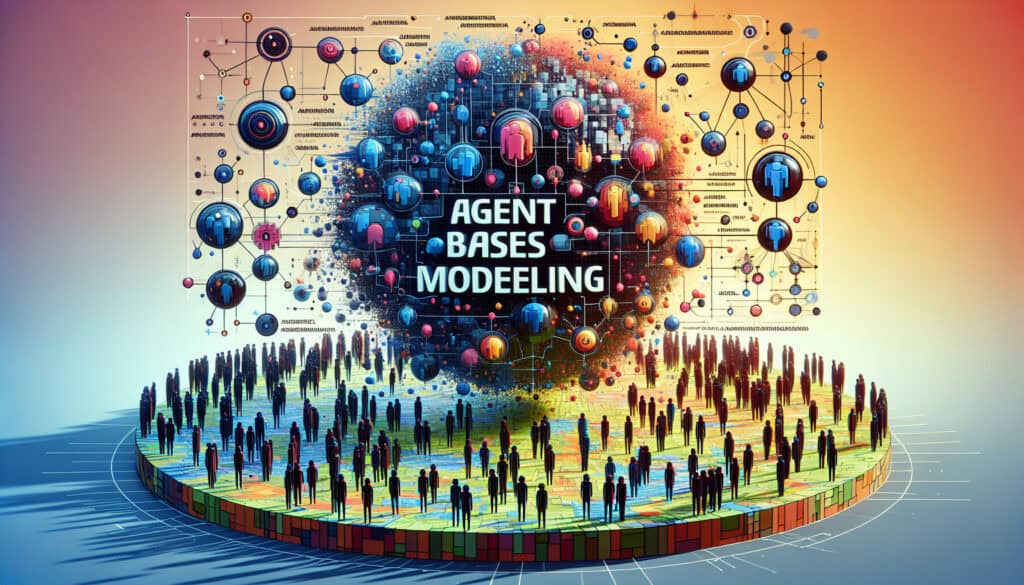A computational modeling technique that simulates the actions and interactions of autonomous agents (both individual and collective entities) to assess their effects on the system as a whole.
- Méthodologies : Ergonomie
Modélisation basée sur les agents

Modélisation basée sur les agents
- Intelligence artificielle (IA), Machine Learning, Simulation, Langage de modélisation des systèmes (SysML)
Objectif :
Comment il est utilisé :
- In various fields, it's used to understand complex systems by modeling the behavior of individual agents and observing the emergent patterns and behaviors of the system.
Avantages
- Allows for the study of complex systems that are difficult to analyze with traditional methods, can capture emergent behavior, and provides a flexible framework for modeling a wide range of phenomena.
Inconvénients
- Can be computationally expensive, the results can be sensitive to the assumptions made about agent behavior, and validating the model can be challenging.
Catégories :
- Économie, Ingénierie, Résolution de problèmes
Idéal pour :
- Simulating the behavior of complex systems with many interacting agents.
Agent-Based Modeling (ABM) serves as a powerful tool across various fields, including environmental science, economics, sociology, and engineering, where it can effectively simulate and analyze the behavior of individual agents, such as consumers, animals, or even products, within a system. In environmental science, for example, ABM can model the interactions between different species and their habitat, providing insights into ecosystem dynamics and aiding in conservation efforts. In the realm of economics, researchers use ABM to simulate market behaviors, allowing for the examination of how economic agents react to changes in policy or market conditions, which can inform government decisions on regulations and intervention strategies. The methodology is also applicable in urban planning, where it can simulate the movement and behavior of residents within a city to optimize infrastructure development. During different phases of a project lifecycle, ABM can be integrated at the design and testing stages, allowing stakeholders, including engineers, designers, and researchers, to visualize potential outcomes and refine product features accordingly. By involving cross-disciplinary teams, including domain experts, data scientists, and end-users, ABM can facilitate collaborative résolution de problèmes, leading to more effective and centré sur l'utilisateur designs. This methodology’s adaptability enables it to be tailored to specific research questions and contexts, making it suitable for use in pilot studies or large-scale implementations, depending on the project’s goals and resource availability.
Principales étapes de cette méthodologie
- Define the problem and identify the system of interest.
- Identify the agents involved and their characteristics.
- Define the rules governing agent behavior and interactions.
- Establish the environment in which agents operate.
- Implement the model using appropriate software or programming languages.
- Determine parameters for simulations and run initial tests.
- Analyze the output data to identify emergent patterns.
- Refine the model based on findings and adjust rules or parameters as necessary.
- Conduct further simulations to validate results and explore scenarios.
Conseils de pro
- Implement a sensitivity analysis to identify how variations in agent parameters influence emergent outcomes.
- Utilize multi-agent systems combined with machine learning techniques for enhanced prediction and adaptation capabilities.
- Incorporate real-world data to calibrate models effectively, ensuring alignment with actual observed behaviors and patterns.
Lire et comparer plusieurs méthodologies, nous recommandons le
> Référentiel méthodologique étendu <
ainsi que plus de 400 autres méthodologies.
Vos commentaires sur cette méthodologie ou des informations supplémentaires sont les bienvenus sur le site web de la Commission européenne. section des commentaires ci-dessous ↓ , ainsi que toute idée ou lien en rapport avec l'ingénierie.
Contexte historique
1960
1961
1968
1974-11-15
1980
1986
1991
1960
1960
1963
1970
1980
1980
1990
1994
(si la date est inconnue ou n'est pas pertinente, par exemple "mécanique des fluides", une estimation arrondie de son émergence notable est fournie)














Articles Similaires
Gestion des opérations de fabrication (MOM)
Système d'exécution de la fabrication (MES)
Plan de contrôle de la fabrication
Tests manuels
Tableaux d'évaluation des manutentions manuelles (MAC)
ManTRA (outil d'évaluation des risques liés aux tâches manuelles)